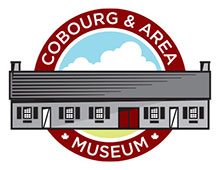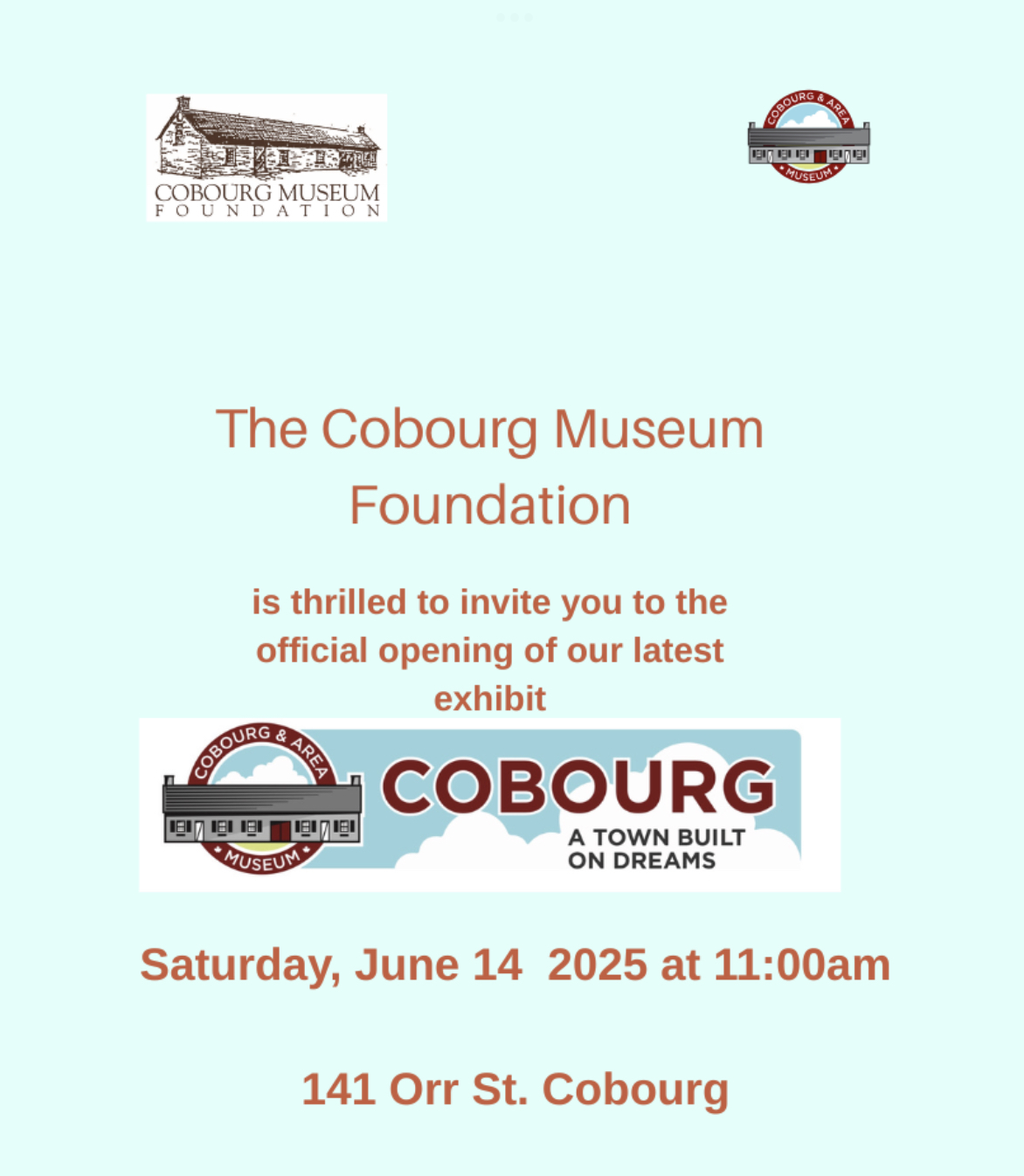Archaeological Investigation
In the fall of 2002, the Cobourg Museum Foundation engaged a local archaeological firm, Northeastern Archaeology Associates, to investigate the ground both inside and outside the “barracks”, and the possibility that it was used as a military barracks around the time of the War of 1812. The director of Northeastern Archaeology Associates is Dr. Lawrence Jackson, who has worked in Ontario archaeology since 1974.The initial archaeological investigation consisted of a series of one-metre square test units carefully excavated using trowels and 1/4-inch mesh screens to recover any possible evidence of 19th-century use.
The project’s archeologist was Donna Morrison, who worked with Northeastern Archaeology’s field assistants, plus local volunteers and high school students from Cobourg and Whitby. A total of eight test units were excavated, including five inside the building and three just outside its outer walls.
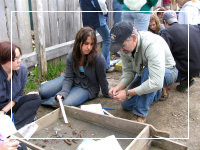 Five separate soil layers, indicating at least four different occupation levels, were discovered inside the building. They can tell us a lot about how the building was used through time.
Five separate soil layers, indicating at least four different occupation levels, were discovered inside the building. They can tell us a lot about how the building was used through time.
The surface level was a thick layer of sandy soil mixed with modern 20th-century debris, broken window glass, broken bottles, nails, etc, reflecting the building’s more recent uses, and was cleared away to reach the deposits of interest.
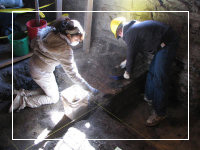 A second level was encountered at a depth of about three to six inches, and contained late 19th-century materials such as animal bones (particularly those of horses), broken glass, and china. These findings support the idea that the building was once used as a livery.
A second level was encountered at a depth of about three to six inches, and contained late 19th-century materials such as animal bones (particularly those of horses), broken glass, and china. These findings support the idea that the building was once used as a livery.
The third level was a layer of sterile beach sand, possibly brought in to form a base for a clean floor for the livery. The sand layer extends over much of the interior of the barracks and is from three to seven inches in thickness.
Beneath the layer of imported sand was a fourth level containing the partial remains of what appears to have been two successive wooden floors. The floors were probably laid on wood sleepers directly on top of the fifth, or lowest level, being undisturbed (native) sandy sub-soil.
The fourth level was found to contain artifacts dating to the early to mid 19th -century. Future testing will confirm whether or not this was the original plank flooring for the building. This is likely since there are no other layers of occupation, below the fourth level, inside the building.
 At this early stage of archaeological investigation, we cannot determine whether or not the building was used as a barracks. However, it clearly was in use in the early to mid-19th century and there is at least one suggestive clue, a clay smoking pipe stem with part of an inscription “ ..17th LANCERS”. There was a British regiment known as the Duke of Cambridge’s Own 17th Loyal Lancers later renamed the 17th Regiment of (Light) Dragoons. They fought in the Crimean War, the American Revolutionary War and other foreign campaigns under this name until at least 1824. While there is no direct evidence of their participation in the War of 1812, an officer could have been assigned as an advisor.The origin of this pipe is not yet known. Other commonly found artifacts on military sites are buttons from uniforms, none of which have been found to date.
At this early stage of archaeological investigation, we cannot determine whether or not the building was used as a barracks. However, it clearly was in use in the early to mid-19th century and there is at least one suggestive clue, a clay smoking pipe stem with part of an inscription “ ..17th LANCERS”. There was a British regiment known as the Duke of Cambridge’s Own 17th Loyal Lancers later renamed the 17th Regiment of (Light) Dragoons. They fought in the Crimean War, the American Revolutionary War and other foreign campaigns under this name until at least 1824. While there is no direct evidence of their participation in the War of 1812, an officer could have been assigned as an advisor.The origin of this pipe is not yet known. Other commonly found artifacts on military sites are buttons from uniforms, none of which have been found to date.
Other finds of interest include:
- numerous domestic animal bones, such as pig and horse;
- many pieces of clay smoking pipes, including one with the maker’s mark “McDougall of Glasgow, Scotland” – commonly found in the 1870s;
- a 1929 US penny;
- a Queen Victoria ten cent silver piece dating to the 19th century;
- a turquoise bead and numerous pieces of glass and metal, including 19th and 20th-century liquor bottles and a bottle with a round bottom;
- earthenware pieces of many varieties;
- and a variety of small children’s toys including marbles found at a number of levels.
At five locations evidence was found of controlled wood fires and at two locations extensive amounts of iron slag were found indicating the presence of a forge. East of the centre of the building several odd arrangements of heavy timbers were found while west of the centre the remains were found of what could have been a secondary stone and timber foundation.
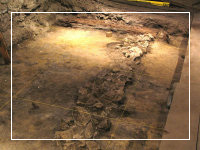 By 2007 the first phase of the archaeological investigation involving over 60 cubic metres of soil from inside the building had been completed and a report on the hundreds of items found will be ready by the end of 2008. It will be used to find the best location for the piers necessary to support a planned wooden floor structure.
By 2007 the first phase of the archaeological investigation involving over 60 cubic metres of soil from inside the building had been completed and a report on the hundreds of items found will be ready by the end of 2008. It will be used to find the best location for the piers necessary to support a planned wooden floor structure.
The first phase work reached a depth where undisturbed sandy soil was found at many locations. Having removed approximately 14 inches of soil to reach this level there is now enough room to build a framing system that will support a wood plank floor. The planks will be assembled into removable panels which will make it possible to continue the archaeology after the heritage centre opens if deemed necessary.
